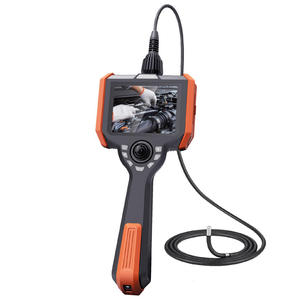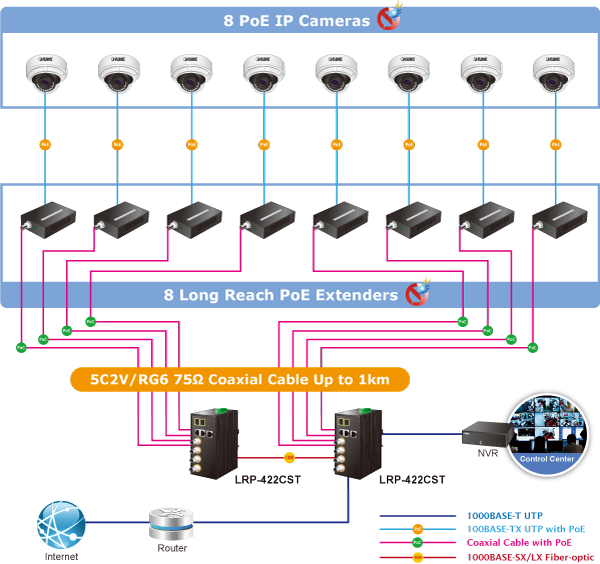Just How CCTV Cameras With Fiber Optic Result Enhance Long-Distance Surveillance
CCTV video cameras equipped with fiber optic output stand for a substantial development in long-distance monitoring modern technology, providing unrivaled advantages over traditional systems. By leveraging the residential properties of light transmission via fiber optics, these electronic cameras ensure high-definition video clip top quality continues to be undamaged throughout extensive distances while efficiently reducing electro-magnetic disturbance. This advancement not just improves picture clearness yet also improves installation procedures and resource allocation. As we discover the ramifications of this modern technology, one must consider exactly how these improvements are reshaping the landscape of security and tracking systems in different applications.

Recognizing Fiber Optic Technology
Fiber optic technology is increasingly made use of in long-distance surveillance applications due to its exceptional capacity for data transmission. This technology uses thin strands of glass or plastic fibers to send information as light signals, substantially minimizing the depletion commonly connected with traditional copper wires. The fundamental properties of optical fiber enable the transmission of huge quantities of information over significant distances without loss of top quality, making it an excellent choice for applications needing dependable interaction.
The concept of total interior representation helps with the efficient transmission of light within the fiber, making sure high bandwidth and rate. Unlike electrical signals in metal wires, optical fiber are unsusceptible to electromagnetic disturbance, improving the honesty of information transmission. This characteristic is especially beneficial in atmospheres with high degrees of electric sound, such as commercial setups or metropolitan areas.
In addition, fiber optic cords are lighter and extra adaptable than their copper counterparts, which streamlines installment and decreases architectural load. With their toughness and resistance to ecological aspects, fiber optics are appropriate for outside applications, thereby expanding the reach of keeping an eye on systems. Consequently, fiber optic modern technology is ending up being a cornerstone in contemporary security solutions, effectively dealing with the challenges of long-distance surveillance.
Advantages of Fiber Optic CCTV
Utilizing fiber optic innovation in CCTV systems provides numerous advantages that boost monitoring capabilities. Among the primary advantages is the ability to transfer high-def video clip over fars away without significant signal deterioration. Unlike traditional copper cords, optical fiber can maintain video top quality over substantial runs, making them excellent for large residential or commercial properties or remote surveillance areas.
Additionally, fiber optic cords are less at risk to electro-magnetic disturbance, which can distort signals in standard systems. This guarantees clearer images and nonstop service, essential for safety and security monitoring. In addition, optical fiber are naturally more secure, as obstructing signals needs specific equipment, hence giving an extra layer of defense versus unauthorized accessibility.
The light-weight and compact nature of fiber optic wires likewise simplifies installment, allowing simpler routing via tight areas and decreasing total labor costs. Their longevity makes them immune to ecological elements such as dampness and temperature level variations, prolonging the lifespan of the monitoring system.
Last but not least, fiber optic systems can sustain a majority of electronic cameras on a solitary network, optimizing resources and using scalability for future development. These benefits make fiber optic CCTV systems a remarkable selection for modern security needs.
Comparison With Traditional Solutions
When comparing CCTV systems, standard configurations often drop short in several essential locations, especially in regards to range and signal honesty. Traditional coax cable systems generally face significant signal degradation over cross countries, limiting effective monitoring ranges to approximately 300 feet (cctv cctv camera with fiber optic output fibre optic cable). Beyond this limit, picture quality lessens, causing prospective dead spots and decreased surveillance performance
In contrast, fiber optic systems keep signal stability over much better ranges, usually surpassing numerous miles without loss of top quality. This is mainly because of their capacity to transmit data as light signals, which are much less vulnerable to electro-magnetic interference than electrical signals made use of in standard systems.
Additionally, typical systems require a lot more substantial upkeep and troubleshooting as a result of their vulnerability to ecological variables such as moisture and electro-magnetic sound. Fiber optic systems, on the other hand, deal boosted sturdiness and lower maintenance expenses, as they are much less susceptible to damage.
Applications in Long-Distance Monitoring
The benefits of modern CCTV systems in keeping signal integrity over long distances open up a broad variety of applications for long-distance tracking. One considerable application remains in metropolitan monitoring, where communities release fiber optic CCTV systems to monitor public rooms, boosting safety and security and hindering criminal activity. These systems supply constant, premium video clip feeds that are critical for effective police and emergency situation action.
An additional vital application is in commercial settings, where remote tracking of manufacturing processes and dangerous areas is crucial. Fiber optic CCTV can stand up to rough environments and send data over long ranges without loss of quality, permitting real-time oversight and reducing threats to workers.
In addition, vital facilities such as airports, trains, and pipes gain from long-distance CCTV surveillance. Protection groups can supervise large locations from streamlined control spaces, making sure fast response to any kind of incidents.
In addition, in farming settings, farmers utilize long-distance CCTV to keep an eye on plants and livestock, helping to boost efficiency and safety and security. Overall, the versatility and integrity of fiber optic CCTV systems make them vital across various fields, allowing comprehensive security services tailored to certain needs.
Future Fads in Surveillance Innovation
Just how will improvements in technology reshape the landscape of surveillance? The future of security technology is poised for substantial improvement, driven by advancements such as fabricated intelligence (AI), artificial intelligence, and side computer. These technologies allow real-time data evaluation, permitting quick recognition of possible threats and improved situational understanding.
AI-powered analytics will certainly boost the accuracy of facial recognition systems, reducing incorrect positives and making it possible for more reliable tracking of individuals. Additionally, the assimilation of Net of Points (IoT) gadgets will help with a smooth network of interconnected security systems, improving tracking capabilities across substantial locations.
Another fad is the shift in the direction of cloud-based storage space remedies, which use scalable data administration and accessibility. This will certainly allow companies to save huge quantities of video information without the restrictions of physical storage, while making sure that information is easily retrievable.

Conclusion
Finally, CCTV cams geared up with fiber optic result represent a substantial development in long-distance monitoring abilities. The application of fiber optic innovation makes certain high-definition video transmission over extensive distances without high quality deterioration, while likewise offering immunity to electro-magnetic interference. The lightweight and flexible nature of these systems assists in structured setup and source optimization. As surveillance modern technology remains to advance, the adoption of fiber optic options will likely play a critical role in boosting protection across varied applications.
Comments on “How a CCTV Camera with Fiber Optic Output Can Improve Surveillance Efficiency”